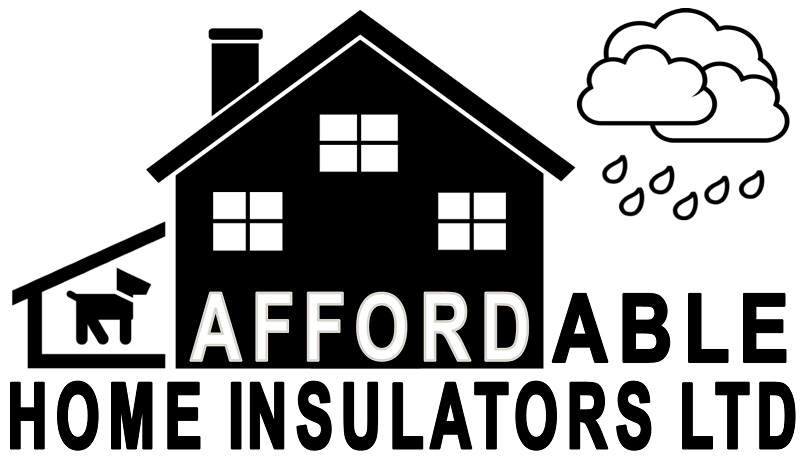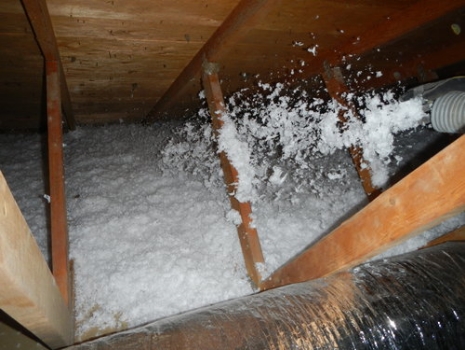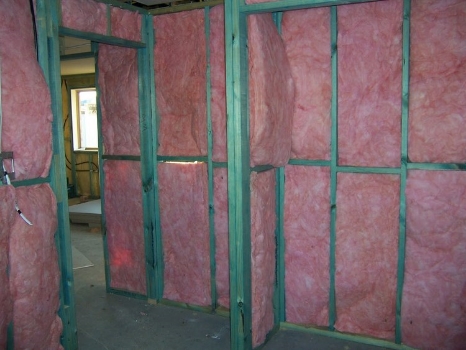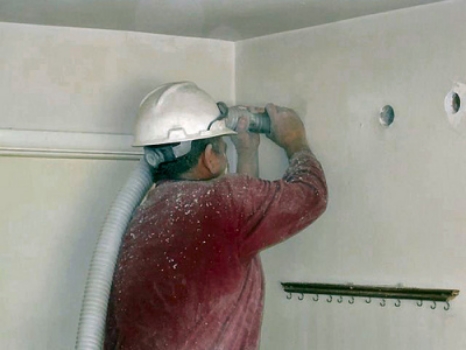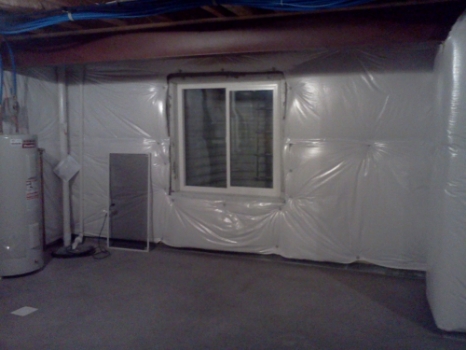Why is it Raining in my Attic
/Attic with frosted roofing nails
Whenever we have a prolonged cold spell in Alberta, we get hundreds of “attic rain” phone calls. Luckily, we don’t have extended periods of cold, too often, but when combined with warmer chinook weather, we get a phenomena known as attic “rain”. Attic rain is a circumstance where moist air in the home, driven by convection forces and heat loss, migrates into your attic and forms a frost on the roof sheathing, roofing nails, and other cold metallic penetrations. Much like ice dams on the roof, these frozen areas can partially thaw during the day, and refreeze at night, leading to a build up on the frost and even ice. When a chinook hits or the weather warms up, droplets of water will fall with the melting frost and ice. Because it’s most prominent on roofing nails, it’s scattered all over your attic, and may sound like rain as it falls into your insulation and the back of of the drywall ceiling.
Attic with excessive ice/frost in the attic
Counterintuitively, attic rain is very common in newer, better insulated homes, than most people think. Older, poorly insulated homes, tend to have hot attics. Because of extensive, and expensive heat loss, into the attic, it' can get quite warm up there, and it will “burn off” frost, before it has time to build up. This heat, is not a cure all, as it can do significant damage to your roof sheathing and shingles. Newer homes, or more insulated homes, have much less heat loss into the attic and this cold attic, will freeze moisture once it finally does pass into the attic.
As far as solutions, there isn’t a one size fits all way of eliminating something that happens infrequently, but can be a real shock to the homeowner. Ultimately, air ventilation to remove cold, moist air from your attic, is a key component. Many older homes have limited or no soffit venting, and framing designs often lead to making the problem worse.
Steps to take if you have Attic Rain
Look in your attic from time to time, to see what is going on up. there. If you are unsure of something, take some pictures and send them to a local insulation company, to evaluate. If you are looking at buying a home, have an inspector evaluate your attic ventilation.
Make sure all of your fan hoses from the house are connected to roof vents and no moist air is flowing into the attic.
If you have a humidifier, turn it off completely during very cold periods or lower it as much as you can
Make sure to use your stove hood exhaust fan whenever cooking or generating moisture in the kitchen
Make sure to use your bathroom fans while showering, leaving them on for an extra 15 minutes to completely remove all of the moist air.
Check to make sure that your attic hatch is sealed properly with weatherstripping. Attic hatches can be a major point of failure for air leaking into the attic.
Reduce the amount of leakage through ceiling light fixtures with gaskets or caulking. Many older attics have a compromised vapour barrier, or none at all. Because of this, your drywall ceiling provides some protection, but is only as good as the weakest areas (penetrations)
If you experience the problem frequently, consider augmenting your existing attic ventilation to move more air out of the attic. If you don’t have continuous soffit intake venting, consider installing passive roof vents low on your roof slope to act as intake. At the top of your roof line, ensure that you have adequate outtake venting. Consider a whirlybird to move more air.
Consider having a power roof fan installed on your roof. It can have a thermostat / humidistat that will turn it on when your attic reaches a certain temperature or humidy level. It will move all of that moist air out of your attic in the winter, and the hot, shingle damaging air, in the winter.
Consider having an HRV or Heat Recovery Ventilator installed on your furnace. This will ensure that the damp indoor air in the house is replaced with crisp dry air from outdoors.
Upgrade your insulation. If you have a very low level, it will promote more heat loss into the attic, carrying more moisture with it.
If you have water spots, you can go up into the attic and check the area above the water stains, and inspect for damage or gaps to the vapor barrier. You can seal these gaps with insulation tape or a can of spray foam, from a home improvement store. You can use a solution of 4 parts water and 1 part bleach to clean these water spots, and possible restore the stained color.
Ultimately, ice and frost in the attic is inevitable in most homes, it’s just a matter of degree. Most people would be surprised to find that their roofing nails almost always have frost on them. Usually this frost doesn’t build up too a large mass (short cold spells instead of long very cold periods) and when they do melt off, it’s usually a gradual process that goes unnoticed and is absorbed by the insulation. Nothing can completely prevent attic rain from happening; it’s just something that naturally occurs with the drastic swings in temperatures. Homeowners have a responsibility to mitigate damage by reducing humidity levels in their homes during cold weather. Although builders & homeowners can minimize the moisture reaching the attic by ensuring the air/vapour barrier is as continuous as possible, air leakage into the attic cannot be completely eliminated. Even a small air leak can deposit a significant amount of moisture over a long cold spell if the moisture content of the air is high.
